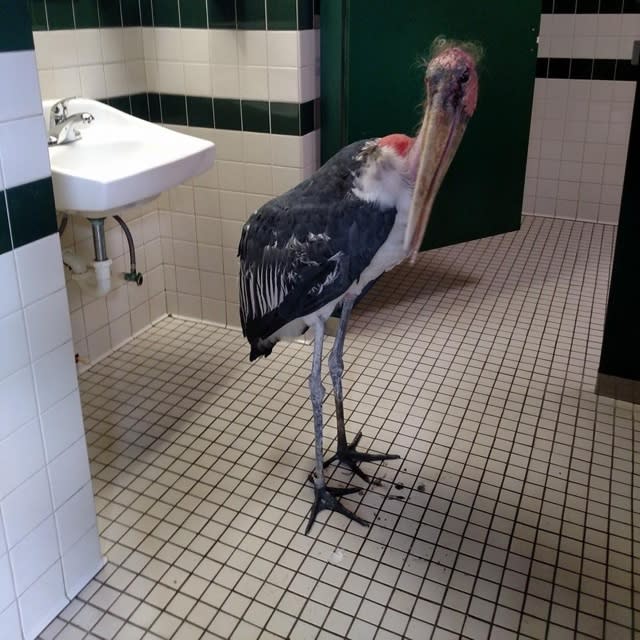Stork hides from Hurricane Matthew in Florida zoo bathroom

A marabou had the right idea when Hurricane Matthew hit Florida last week - by hiding out in the zoo bathroom.
The stork, called Oldman, is a resident at the St Augustine Alligator Farm Zoological Park in Florida.
See also: Hurricane Matthew: Florida residents clear supermarket shelves
See also: Satellite image of Hurricane Matthew scares everyone
And a staff member uploaded a picture of Oldman in the bathroom to Facebook, writing: "No species discrimination in this bathroom!"

One user joked: "Pardon me, this bathroom appears to be out of toilet paper."
The zoo also shared photos of how it prepared for the storm and protected its animals.
It wrote: "Two days of hurricane prep is now over! Every bird and mammal is housed safely indoors, all venomous snakes are double contained (at least), tortoises and wee crocs are in various tubs and the storks are hanging out in the public restrooms! We love our animals and staff. Take care everyone and be careful. #rainraingoaway #hurricanematthew #zoosrock #matthewsucks."
And, it seems, everyone made it through unscathed. A Facebook update read: "We survived! The zoo has its fair share of downed trees, flooding, and debris, but overall we are thrilled with what staff walked into this morning.
"Today was a busy day of cleanup with many more to come, but things could have been much worse.
"So many other zoos and individuals have offered up their generous aid. Lucky we are not in desperate need of it and have phenomenal staff already in place ready to tackle the task."
And it added, Oldman was now back in his pen, "demanding the respect of his companions".
The marabou stork is a large wading bird. It breeds in Africa south of the Sahara, in both wet and arid habitats, often near human habitation, especially landfill sites.
It is sometimes called the "undertaker bird" due to its shape from behind: cloak-like wings and back, skinny white legs, and sometimes a large white mass of "hair".




